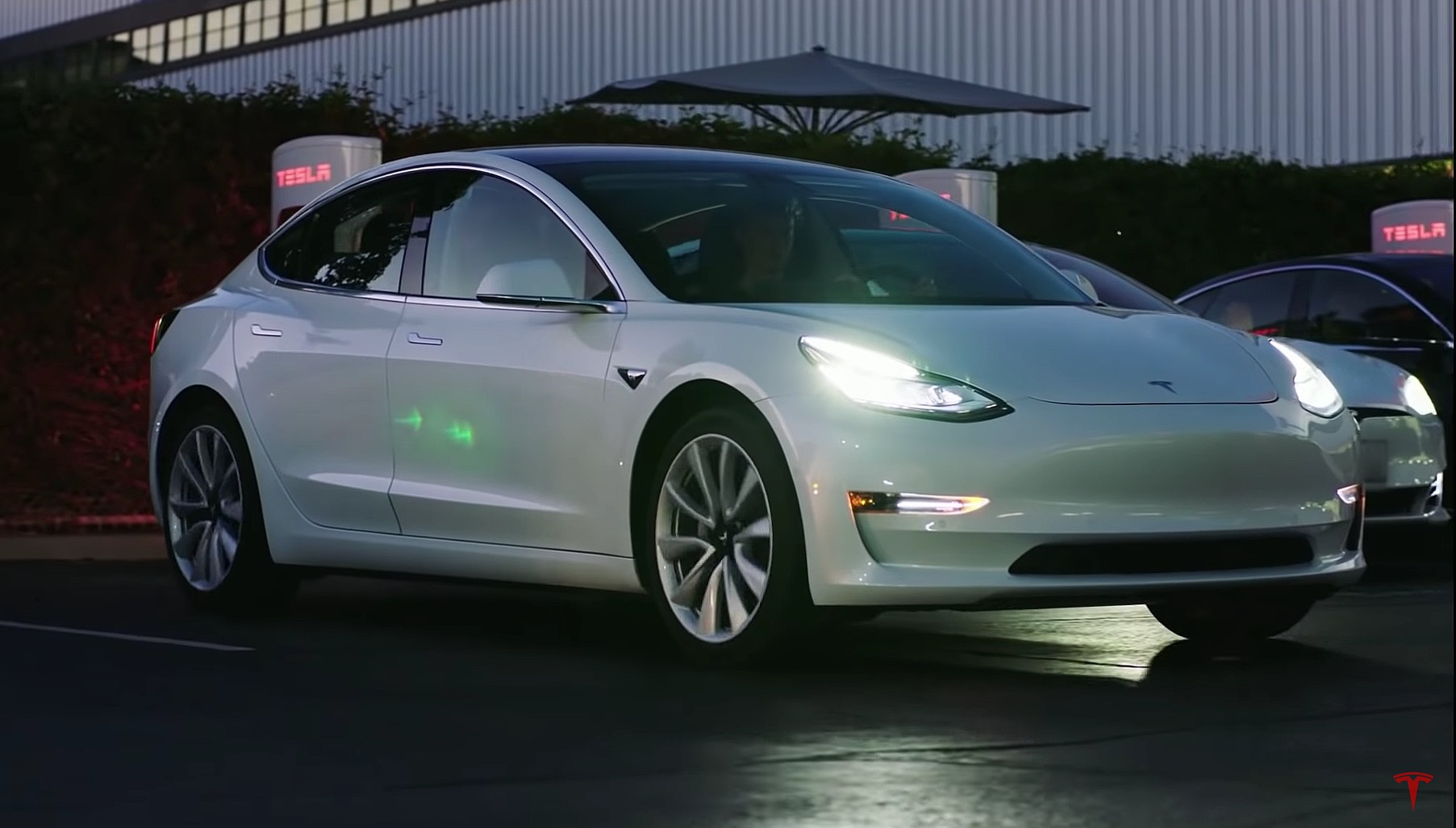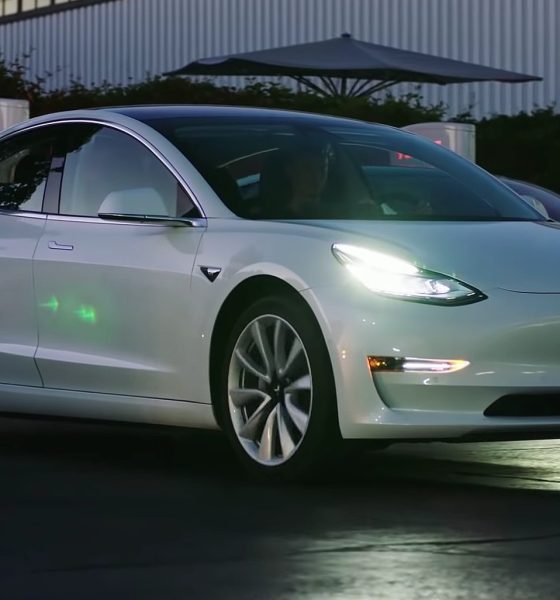

News
Lithium produced for Tesla’s batteries is less polluting than 31 cups of coffee: researcher
There are many criticisms of electric vehicles like Teslas, and one of them involves the notion that EVs require massive amounts of water to produce the lithium in their batteries. This idea, according to Dr. Maximilian Fichtner, who serves as the Director at the Helmholtz Institute for Electrochemical Energy Storage in Germany, is not accurate at all.
In a recent conversation with Tagesspiegel Background, the battery researcher stated that the production of electric car batteries is not as extreme as what EV critics would suggest. To produce the lithium needed for a 64 kWh battery pack, for example, Fichtner stated that about 3840 liters of water are evaporated according to usual calculation methods. This is roughly comparable to the production of 250 grams of beef, 30 cups of coffee, or half a pair of jeans, according to the researcher.
Explaining further, Fichtner stated that even before electric cars like Teslas became popular, lithium was already being used in large quantities in many industrial and chemical processes. Lithium-ion batteries are also widely used in mobile devices, which are universally accepted today. “I’m always surprised that the public never talks about lithium in laptops or mobile phones – but suddenly it’s a problem with the e-car,” the battery researcher said.
But the water consumption involved in the production of lithium for electric car batteries is just the tip of the iceberg. Fichtner estimates that a 64 kWh pack is likely in the middle of various variants of the Tesla Model 3 sedan, whose long-range versions can easily go beyond 450 km (280 miles) of range per charge. If one were to infer that an electric car battery pack can remain optimal with 2,000 full charging cycles, this could equate to a total distance of about 900,000 km. And that’s with estimates on existing battery technology.
With this in mind, it appears that Tesla’s lithium-ion batteries are actually less polluting than otherwise everyday items such as steak or the aforementioned 30 cups of coffee, since they have the potential to remain in service for a very long time. About 2,000 charging cycles, after all, would likely equate to years of average EV use.
Companies like Tesla are hard at work in improving their battery cells. This much is hinted at by Tesla executives such as CEO Elon Musk and President of Automotive Jerome Guillen, both of whom have noted that Tesla’s batteries are always evolving. Fichtner expects electric car batteries to have an average lifespan of 3,000 cycles by 2025, which would make EV batteries even more environmentally-friendly.
In his recent conversation with the publication, the researcher discussed one of the most sensitive topics surrounding battery production: cobalt. Cobalt has developed a very negative reputation due to the abhorrent conditions in cobalt mines in areas such as Congo. Fortunately, many automakers have since pledged to source the cobalt used in their EVs from areas that meet stringent standards. Tesla does this and more, with the electric car maker attempting to develop cobalt-free batteries in the near future.
For now, electric car makers are in a game of cobalt reduction, and in this sense, Tesla has a notable lead. The batteries used in Volkswagen’s well-received ID.3 hatchback, for example, contain about 12-14% cobalt. The Tesla Model 3, on the other hand, only contains about 2.9% cobalt as of 2018. Fichtner predicts that if things go well, cobalt-free batteries could enter the market as early as 2025.
Maximilian Fichtner received his Ph.D. in Chemistry/Surface Science with distinction and the Hermann Billing Award for his thesis in 1992. He currently serves as the professor for Solid State Chemistry at the Ulm University and Executive Director of the Helmholtz Institute Ulm for Electrochemical Energy Storage (HIU). He has also worked in collaboration with the German ministries of Economy and Research and Education, and has served as the Chair of the 1st International Symposium on Magnesium Batteries in 2016.

News
Elon Musk’s Grokipedia surges to 5.6M articles, almost 79% of English Wikipedia
The explosive growth marks a major milestone for the AI-powered online encyclopedia, which was launched by Elon Musk’s xAI just months ago.

Elon Musk’s Grokipedia has grown to an impressive 5,615,201 articles as of today, closing in on 79% of the English Wikipedia’s current total of 7,119,376 articles.
The explosive growth marks a major milestone for the AI-powered online encyclopedia, which was launched by Elon Musk’s xAI just months ago. Needless to say, it would only be a matter of time before Grokipedia exceeds English Wikipedia in sheer volume.
Grokipedia’s rapid growth
xAI’s vision for Grokipedia emphasizes neutrality, while Grok’s reasoning capabilities allow for fast drafting and fact-checking. When Elon Musk announced the initiative in late September 2025, he noted that Grokipedia would be an improvement to Wikipedia because it would be designed to avoid bias.
At the time, Musk noted that Grokipedia “is a necessary step towards the xAI goal of understanding the Universe.”
Grokipedia was launched in late October, and while xAI was careful to list it only as Version 0.1 at the time, the online encyclopedia immediately earned praise. Wikipedia co-founder Larry Sanger highlighted the project’s innovative approach, noting how it leverages AI to fill knowledge gaps and enable rapid updates. Netizens also observed how Grokipedia tends to present articles in a more objective manner compared to Wikipedia, which is edited by humans.
Elon Musk’s ambitious plans
With 5,615,201 total articles, Grokipedia has now grown to almost 79% of English Wikipedia’s article base. This is incredibly quick, though Grokipedia remains text-only for now. xAI, for its part, has now updated the online encyclopedia’s iteration to v0.2.
Elon Musk has shared bold ideas for Grokipedia, including sending a record of the entire knowledge base to space as part of xAI’s mission to preserve and expand human understanding. At some point, Musk stated that Grokipedia will be renamed to Encyclopedia Galactica, and it will be sent to the cosmos.
“When Grokipedia is good enough (long way to go), we will change the name to Encyclopedia Galactica. It will be an open source distillation of all knowledge, including audio, images and video. Join xAI to help build the sci-fi version of the Library of Alexandria!” Musk wrote, adding in a later post that “Copies will be etched in stone and sent to the Moon, Mars and beyond. This time, it will not be lost.”
News
Tesla Model 3 becomes Netherlands’ best-selling used EV in 2025
More than one in ten second-hand electric cars sold in the country last year was a Tesla Model 3.

The Tesla Model 3 became the most popular used electric car in the Netherlands in 2025, cementing its dominance well beyond the country’s new-car market.
After years at the top of Dutch EV sales charts, the Model 3 now leads the country’s second-hand EV market by a wide margin, as record used-car purchases pushed electric vehicles further into the mainstream.
Model 3 takes a commanding lead
The Netherlands recorded more than 2.1 million used car sales last year, the highest level on record. Of those, roughly 4.8%, or about 102,000 vehicles, were electric. Within that growing segment, the Tesla Model 3 stood far ahead of its competitors.
In 2025 alone, 11,338 used Model 3s changed hands, giving the car an 11.1% share of the country’s entire used EV market. That means more than one in ten second-hand electric cars sold in the country last year was a Tesla Model 3, Auto Week Netherlands reported. The scale of its lead is striking: the gap between the Model 3 and the second-place finisher, the Volkswagen ID3, is more than 6,700 vehicles.
Rivals trail as residual values shape rankings
The Volkswagen ID.3 ranked a distant second, with 4,595 used units sold and a 4.5% market share. Close behind was the Audi e-tron, which placed third with 4,236 registrations. As noted by Auto Week Netherlands, relatively low residual values likely boosted the e-tron’s appeal in the used market, despite its higher original price.
Other strong performers included the Kia Niro, the Tesla Model Y, and the Hyundai Kona, highlighting continued demand for compact and midsize electric vehicles with proven range and reliability. No other model, however, came close to matching the Model 3’s scale or market presence.
News
Tesla Model Y Standard Long Range RWD launches in Europe
The update was announced by Tesla Europe & Middle East in a post on its official social media account on X.

Tesla has expanded the Model Y lineup in Europe with the introduction of the Standard Long Range RWD variant, which offers an impressive 657 km of WLTP range.
The update was announced by Tesla Europe & Middle East in a post on its official social media account on X.
Model Y Standard Long Range RWD Details
Tesla Europe & Middle East highlighted some of the Model Y Standard Long Range RWD’s most notable specs, from its 657 km of WLTP range to its 2,118 liters of cargo volume. More importantly, Tesla also noted that the newly released variant only consumes 12.7 kWh per 100 km, making it the most efficient Model Y to date.
The Model Y Standard provides a lower entry point for consumers who wish to enter the Tesla ecosystem at the lowest possible price. While the Model 3 Standard is still more affordable, some consumers might prefer the Model Y Standard due to its larger size and crossover form factor. The fact that the Model Y Standard is equipped with Tesla’s AI4 computer also makes it ready for FSD’s eventual rollout to the region.
Top Gear’s Model Y Standard review
Top Gear‘s recent review of the Tesla Model Y Standard highlighted some of the vehicle’s most notable features, such as its impressive real-world range, stellar infotainment system, and spacious interior. As per the publication, the Model Y Standard still retains a lot of what makes Tesla’s vehicles well-rounded, even if it’s been equipped with a simplified interior.
Top Gear compared the Model Y Standard to its rivals in the same segment. “The introduction of the Standard trim brings the Model Y in line with the entry price of most of its closest competition. In fact, it’s actually cheaper than a Peugeot e-3008 and costs £5k less than an entry-level Audi Q4 e-tron. It also makes the Ford Mustang Mach-E look a little short with its higher entry price and worse range,” the publication wrote.








